C.K. Webb's Blog: Twisted Webb, page 2
February 22, 2012
Magic, Monsters & Mythical Creatures: WIZARDS
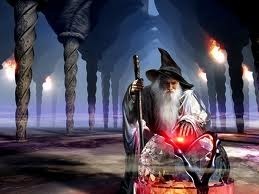 We have talked of witches, dragons, Leviathan and the Basilisk, but this series would be incomplete if we did not delve into the mystery of…
We have talked of witches, dragons, Leviathan and the Basilisk, but this series would be incomplete if we did not delve into the mystery of… WIZARDS
In the beginning of the days when magic took the forefront of the human psyche, there were two types of common spell casters. There were priests, who gained their powers from their deity or gods, and there were sorcerers, who worked their magic without any divine assistance, using sheer talent alone. Wizards, who required neither divine assistance nor talent, but seemed to be born with their powers, came later on.
The origins of a wizard’s talents are not clear, but every culture has its own explanations which add to the ever growing legend. The most popular explanation is that the person in question has either a deity or a demon in their family bloodline. Some cultures think the talent comes from having draconic blood, while others believe that sorcerers are the descendants of great heroes who took their magic from other races, typically dwarfs, either by force or with trickery. There are even some cultures who believe that wizards are given their power as a sign of favor from one of the elemental lords.
The origins of wizardry itself are a bit more solid and can be traced back to ancient cities where the Gilded League now holds sway. It is there that the first wizards began to study the magical arts and learn to cast, rather than simply wield the power they had. Nobody is quite certain who the first wizard was or how he learned his craft, but some legends tells us he learned by sneaking into a god's workshop and spying on him as he practiced his powerful spells. The legend tells us the wizard sought to learn the secret to working magic the way the gods did without being dependent on a talent as the sorcerers were. Dwarfs and elves however, claim a different origin for their wizards. The dwarfs claim wizardry developed as a natural extension of their skills as craftsmen, while elves claim their wizards were taught by gods.
The first recorded wizards appeared thousands of years ago in prosperous cities. Theirs was an art involving conjuring and summonings that had been adapted from the rites of evil clerics. They called on demons, devils, and other hideous beings and then made dark pacts with them in their search for knowledge and power. Death and madness were the ultimate risks for wizards and all those who kept company with them. More often than not, the biggest danger that wizards faced came from their fellow wizards who were always seeking to further their craft. Defeating another wizard and stealing his knowledge was the easiest way to learn and far less dangerous than dealing with the foul creatures that bubbled up from the belly of Hell itself.
As a result, magic became a secretive profession with all knowledge jealously guarded and only taught to the rare apprentice. Though a few were rich men who paid exorbitant sums for a chance at great power, all too often such apprentices were only clever youths taught just enough to be of use in the lab who supplemented that education with whatever scraps of knowledge they could filch on their own. The latter were often never intended to be anything other than menial helpers and only managed to learn enough to become a wizard in their own right. Because of this, most wizards were only half trained and possessed incomplete knowledge with the predictable dangers associated with it.
Even with such terrible risks and such jealously guarded knowledge, wizardry spread. Every culture has people who will do anything for power and they sought out wizards for training. Thus, over the centuries and millennium, the wizard's art spread throughout the world.
Merlin is a legendary figure best known as the wizard featured in the legends of Arthur. The character first appears in Geoffrey of Monmouth's Historia Regum Britanniae, written in 1136. The writer claims to have gleaned all his information from historical documents and scrolls that track the life of this mysterious and well known wizard. The stories of Merlin have survived decades of time and each new generation places its’ own unique spin on the ages old tale. The newest Arthurian tale with a Merlin twist is HBO’s original series, Camelot. In it we see a more conniving, plotting Merlin who is actually afraid to use his powers because he cannot control them. When he does use them, they suck the very life from his body.
Another wizard that is famous from the literary world is Gandalf. He first appeared in 1937 in J.R.R. Tolkien’s The Hobbit. Gandalf was first introduced as Gandalf The Grey and reintroduced later as Gandalf The White when he was brought back from the abyss of death. Other Tolkien books featured this well-known wizard and followed the hobbit’s journey into the very fires of Mordor. The Fellowship of the Ring, The Two Towers and The Return of the King all carried Gandalf as a central character. The books were later adapted to film and directed by Peter Jackson in 2001. Receiving 13 Academy nominations, The Fellowship of the Ring took home four Academy Awards and is, to this day, the 19th highest grossing film of all time. The Two Towers and The Return of the King would also be adapted to film and become classics from our time and see their fair share of Academy nominations and wins. The Lord of the Rings trilogy is the highest grossing film trilogy of all time and brought in a whopping $2.91 billion dollars worldwide.
I would step on a few toes if I failed to mention some more famous wizards from our time… The wizards of The Harry Potter series. In the series written by J.K. Rowling, we meet Harry Potter, an ordinary boy with extraordinary powers. As the series progresses, we watch Harry hone his skills as a wizard. In the meantime, we are introduced to a whole cast of wizards including Professor Dumbledore and Professor Snape. Though the series is considered a young adult series, there are some extremely dark elements to the book and some of the wizards within its pages. As the series progresses, it becomes more and more harrowing as wizards began to kill other wizards in an attempt to be more powerful.
Through books and film we have discovered magic, monsters and mythical creatures. Though many of these things are fiction they still hold a very real place in our hearts and minds. They allow us to see possibilities we could not see before and they allow us to dream. We can dive into a fictional world filled with wizards, witches, dragons, Leviathan and the Basilisk and we can, for a short while, believe. Though these magical, mythical beings may not exist in our world, there is a wonderful place where we can go to find them all. It is a world filled with pages from great writers and the stories they have told, with films that we have fallen in love with, and full of dreams that can only exist in the most magical of places…
It is our imagination, and with it there are no boundaries and magic IS real.
CK Webb
Published on February 22, 2012 03:22
February 2, 2012
Magic, Monsters and Mythical Creatures
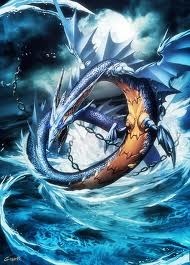 The Basilisk and Leviathan
The Basilisk and LeviathanSometimes magic, monsters and myth collide. The end result is something far more elusive and harrowing than we care to believe. Whether they are fiction or real, the Basilisk and Leviathan are creatures that will not be denied their rightful place in our worlds. Ever present not only in literature, but in film as well, they have woven themselves into the very fabric of some cultures and are truly the stuff that nightmares are made of. Though similar in some ways, their traits vary considerably and give each creature its own unique flair and its very own killing style.
In some European legends, a Basilisk is a legendary reptile reputed to be king of serpents due to the crown-shaped crest upon its head. Alleged to be hatched by a cockerel from the egg of a serpent or toad, the Basilisk is rumored to cause death to anyone who locks eyes with the beast. One of the earliest accounts of the Basilisk comes from Pliny the Elder's Natural History, written in 79 AD. In it, he describes a monstrous, cow-like creature of which "all who behold its eyes fall dead upon the spot". It is also believed that the venom of the Basilisk is so destructive that the creature leaves behind a burnt and scorched earth as it slithers across the landscape.
Many writers have been seduced by this legendary monster and brought forth their own ideas and slight variations of the beast. Geoffrey Chaucer featured a 'Basilicok' in his famous Canterbury Tales. He made use of the legend which states that basilisks can be killed by hearing the crow of a rooster or gazing at itself through a mirror. Chaucer would incorporate one of these killing methods in the legend of the basilisk of Warsaw. This tale would see the Basilisk killed by a man carrying a set of mirrors.
More and more stories added to the enormity of the Basilisk's reputation and gradually added to the Basilisk's killing powers as well. Some began to describe it as a large beast capable of breathing fire and killing with only the sound of its voice. Some writers would even claim that the Basilisk could kill by touch and could even kill by touching something that a poor soul was touching. So, a sword held in the hand of a great warrior would yield almost certain death the very moment the hero struck the killing blow into the creature. All of this death came from a beast that would become the guardian and traditional symbol of strength for the city of Basel in Switzerland.
Many other writers would toy with the idea of this mythical monster and introduce it to millions of readers in the process. William Shakespeare, Samuel Richardson, Alexander Pope, Voltaire and even Charles Dickens dipped their quills into the world of this mythical monster and referenced it and its killing power in their work. Of course, the most famous telling of a Basilisk tale today is most likely J.K. Rowlings' Harry Potter and The Chamber of Secrets. In this novel, the Basilisk, an enormous, snake-like creature with monstrous fangs almost kills Harry with its deadly venom, but he is saved by the tears of a phoenix.
Artists would also put forth their renditions of the Basilisk. Leonardo da Vinci included a Basilisk in his Bestiary. He describes it as so utterly cruel that when it cannot kill animals or humans by its baleful gaze, it turns upon the earth and withers everything in its path.
Unlike the Basilisk, Leviathan is widely claimed as a sea creature. In demonology, Leviathan is hailed as one of the seven princes of Hell and known as its gatekeeper.
Mentioned several times throughout biblical text, Leviathan finds its history deeply rooted in the traditions of Near Eastern Mythology and dates back as far as the 3rd Century BC.
In the Canaanite myth, 'Liviathan' was considered an interpretation of the chaos that spilled forth at the beginning of the Universe's creation. From this chaos, a seven headed, fire-breathing crocodile-like dragon was formed. He lurked in the depths of the sea and waited for an opportune moment so he could rise up and steal away unsuspecting victims. A great warrior named Anat fought Leviathan and bound him in chains, bringing order to the universe. Though the tale ended there, it is believed that Leviathan is not dead, but simply waiting for the day when he will again rise up from the depths and destroy us all.
Beliefs about Leviathan and its origins vary greatly from one culture and religious background to another. If you are a Christian, Leviathan is a bringer of death sent forth by Satin himself. On the other hand, according to Anton Szandor LaVey, the author of The Satanic Bible, Leviathan represents the element of Water. The element of Water in Satanism is associated with life and creation. In The Satanic Bible, Leviathan is known as one of the Four Crown Princes of Hell.
We see two different takes on a mythical monster that looks the same to both groups and yet, is so very different in its intentions.
Other variations of this monstrous creature would show up in great literary works and the name Leviathan would become synonymous with any large creature living in the ocean. One in particular would become an instant classic and introduce us to a new spin on the Leviathan tale.
In 1851 American author Herman Melville published his novel, Moby Dick. The story tells the adventures of a wandering sailor named Ishmael and his voyage with Captain Ahab. The captain has but one purpose, to seek out a specific whale: Moby Dick. The whale is described as a ferocious and elusive white sperm whale that, in a previous encounter, destroyed Ahab's boat and bit off his leg. Ahab becomes consumed with bitter anger and longs to seek his revenge by killing the beast.
Leviathan would also gather some film credits when in 1989 a movie of the same name was released. Often compared to Alien and The Thing, Leviathan's storyline focused on underwater deep-sea miners. After finding some Soviet wreckage, the crew brings back deadly cargo to their base on the ocean floor with horrifying results. The crew must then fight to survive against a genetic mutation as they are hunted down and killed one by one by LEVIATHAN!
Though their similarities are unmistakable, the tales behind the Basilisk and Leviathan could not be farther apart. Whether you are a fan of the classic tales or have only recently been introduce through Harry Potter, chances are you will not soon forget these monstrous and mythical creatures. Steeped in magical folklore and transported through time by literature, paintings and film, the Basilisk and Leviathan will surely be with us for hundreds maybe even thousands of years. I cannot tell you whether these creatures exist or if they are merely a figment of a most active imagination. The question still remains: Are they magic, monsters or mythical creatures… only you can decide.CK Webb for Suspense Magazine
Published on February 02, 2012 12:26
November 30, 2011
MAGIC, MONSTERS & MYTHICAL CREATURES
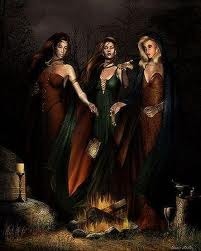
As summers' long, lazy days come slowly to an end and autumn begins to push into its place, we find ourselves on a brand new journey of discovery. This journey will take us from witches to warlocks, from devils to demons, from elves to fairies and everything in between. So, light the candles and pull up a seat as I welcome you to the world of…
WITCHES & WITCHCRAFT
Throughout the ages, many different eras have come and gone in mankind's history. Some are rumors, whispered in dark rooms and rarely spoken of in the daylight hours. But others twisted our history and our psyche as they left huge black marks on our past.
Witchcraft, in history, has been defined as the use of mythological, religious, supernatural or magical powers. Naturally, anyone who practices witchcraft is labeled a witch and oftentimes, with harrowing consequences.
It was often believed, in many cultures, that witches were in league with the Devil himself and only used their powers for evil or to bring harm to others. Today, there are many thoughts on witches & witchcraft, but more often than not, they are viewed simply as good or bad. It was not always this way.
In the early fourteenth and fifteenth centuries in Europe, witchcraft was brought to the attention of those in positions of power within the churches and towns. So began the infamous witch-hunts, where an estimated forty to one hundred thousand men and women were accused of witchcraft and subsequently executed for their deemed roles as cohorts of Satan. They suffered horrible deaths by hanging, burning or even drowning and many were most likely, innocent of their accused crimes.
Europe was not the only place where witchcraft was condemned and, in what has become widely known throughout the world, Massachusetts would leave a dark stain on our nation's history, forever.
In 1645 in Springfield, Massachusetts, the very first accusations of witchcraft were brought forth by a husband and wife. While each accused the other of evil dealings with the Devil, the husband was later found innocent while the wife was, at first, acquitted then subsequently convicted of murdering her child and sentenced to hang. She did not make it to the noose and died while imprisoned. What began as a domestic squabble, quickly spun out of control and within the next eighteen years, eighty people would find themselves accused of witchcraft. Thirteen women and two men met with an untimely demise during those years and each were executed for their presumed roles as witches.
In what would later become the most widely known witch-hunts in history and would be the inspiration for many books and films, the Salem Witch Trials took place from February 1692 through May of 1693. The Salem witch trials were a series of hearings held before the local magistrate in Essex, Suffolk and Middlesex Counties in colonial Massachusetts. Over one hundred fifty people were arrested and imprisoned for witchcraft. The two courts convicted twenty-nine people of witchcraft, which was considered a capitol felony, nineteen of which, were hanged. One man who refused to enter a guilty plea was crushed to death beneath giant stones in an attempt to coax a confession from him. At least five others, who were accused, but never convicted, died while imprisoned.
Though known in history as the "Salem" witch trials, the hearings took place in several towns including Salem Village, Ipswich, Andover and Salem Town, Massachusetts. The best-known trials were conducted by the Court of Oyer and Terminer in 1692 in Salem Town. Twenty-six people went to trial before this court…
All were convicted.
The same town where witchcraft was once met with disdain now makes a mean business of witches and the art of witchcraft. Salem, Massachusetts' tourism is the backbone of their economy and many visitors come to get a look at the town where witches who were once hung are now celebrated. You can visit famous places where witches were hanged, take a haunted tour at Halloween and even take home a witchy souvenir or two.
The focus on witchcraft died down after the trials, but some writers would see to it that no one ever forgot. In 1953 American playwright Arthur Miller wrote his dramatization of the Salem witch trials, The Crucible. The play was made into a movie of the same name many years later and starred Winona Ryder & Daniel Day-Lewis. It is also the basis for study throughout many of our school systems and today, considered a classic. The Witches is a children's book by Roald Dahl and it was first published in London in 1983. With beautiful illustrations and a ton of controversy to go with it, it remains one of the greatest witch books ever written and can be found in most libraries.
There would be a TV show that would emerge in the 1960's with a fresh new take on the witch. Bewitched, starred Elizabeth Montgomery as an average wife with some above average talents and with just a wiggle of her nose, she gave America a new outlook on witches. Other TV shows would later follow in the footsteps of Bewitched by offering a more positive take on the dark subject of witches. Charmed debuted in 1998 and featured the four, fictional Halliwell sisters—Prue, Piper, Phoebe and Paige. Known as The Charmed Ones in the magical community, they were from the most powerful line of good witches in history and sent to protect innocent lives against evil beings, such as demons and warlocks. Each sister possessed her own unique magical power that she tried, often without success, to keep hidden from the world, while living a somehow normal life in San Francisco. The series was a huge hit and ran for many seasons. It is still in syndication today.
Two unknowns would ignite the world's fascination with witches when they introduced their debut young adult novel in 2009. Kami Garcia & Margaret Stohl made a huge splash in the literary world with their novel Beautiful Creatures. Billed as one of the best debuts of 2009, the book was followed up by a second book in the series, Beautiful Darkness, the following year. The next book in this franchise, Beautiful Chaos, will be released in October of this year. Not only did the books gain worldwide recognition from readers, but also grabbed Hollywood's attention and has been optioned by Warner Brothers as a major motion picture! That is a far cry from the Salem Witch Trials.
A recent movie release that would bring a little of the darkness back to the witch is 2011's Beastly. In it, a boy is cursed by a modern day witch, played by Mary-Kate Olsen. He is given one year to change the person he has become on the inside & find someone to love him for who he is or spend the rest of his life severely scarred and tattooed from head to toe.
Witches and witchcraft have come a very long way from the days of witch-hunts and mass executions. From Bugs Bunny's fantastic Witch Hazel with her broom stick and flying hair pins that we loved as kids, to the unusual loveliness of Lena in Beautiful Creatures, witches have fascinated us for many years been a huge part of our history as a people.
Witches are no longer the hideous hags we believed them to be as children. There is no wart on their long, bulbous nose to give them away or a cackle in their voice that spells certain doom. Witches are all around us, but often hidden from our view. They could be your neighbor or the girl down at the super market or even the writer who weaves those wicked tales you love to read. So, whatever you do, watch what you say and how you treat those strangers you pass on the street or risk hearing the dreading words…
For a charm of powerful trouble,
Like a hell-broth boil and bubble.
Double, double toil and trouble!!!
CK Webb
Published on November 30, 2011 11:47
October 10, 2011
AUTHOR SPOTLIGHT:
 MARK P. SADLER
MARK P. SADLERSadler's humble beginnings started in a small caravan in his grandmother's garden in Post War Britain, May 1956.
Life started in the little nursing home in Dudley, and moved to a caravan in his grandparents back garden, until his aunt and her new husband moved out of the big house. For the next three years the new family inhabited the upstairs of the house on the hill in Woodsetton. Young Sadler quickly learned the joy of discovery through books as his mother, a pre-school teacher, read countless stories to him. He was reading at a level two years ahead of his age by the time he entered school and won his first reading prize in his beginning year at St. Nicholas' Primary in Codsall, Staffordshire.
The family had by this time moved to the country, living in a small bungalow in Codsall Wood. By the time he graduated from Codsall Comprehensive in 1974 a future in writing seemed to be taking a clear path. The following year Sadler immigrated to the States on a student visa to attend Ambassador College Big Sandy Texas and participated in journalism and speech classes, intent on becoming the next big television news anchor.
As is often the case life got in the way. After hitchhiking from Dallas to Los Angeles a random blind date turned into a serious commitment, and just four months later, a blushing bride with a blooming belly, led him to Oklahoma City. With a family to care for Sadler went about his way over the next seven years trying to find a way to support what had now become two boys and a wife unable to work through illness. Writing took a back seat.
From the factory floors of Robberson Steel to the sales floor at Intempo Wood Factory, from employment counselor to debt collector, he finally found a permanent position at Retail Merchants Collection Service. Debt collections led to career that has now spanned over thirty years and has remained the one constant in his soap opera of a life. There were times, as the boys became teenagers that the opportunity came to write.
One day in 1980, picking up a copy of a new publication, OKC Sports Fan Forum, he noticed that there was no soccer mentioned, typical of just about any publication in Oklahoma that was so entrenched in football, basketball and baseball. When he called to complain to the editors he was offered the opportunity to write an editorial column covering the progression of soccer in Oklahoma as America faced the hosting of the World Cup.
When 2007 rolled around it found Sadler remarried and living in Tucson, having moved there in 1993. His two boys were now young men with children of their own, and a third son from his third marriage starting high school. With a little extra time on his hands he once again took up the skills that had engrained themselves in him during high school, and took on the task that he knew one day he would succeed in; it was time to write a book.
Inspiration hit, as it tends to do, at one in the morning. Armed with bludgeoning thoughts he turned on the computer and let the words flow. Several months later he enrolled in a class at Pima Community College and under the tutorial of Meg Files learned how to control the form of the words until Blood on His Hands was born.
The search for an agent for a new unpublished author proved daunting, nay impossible, and so along with one in every three books written this year Sadler decided to self-publish. Seeking the services of print on demand publisher Infinity Publishing the project went ahead. The novel should be available for ordering by early May 2009.
Sadler lives with his wife in Tucson, where he is working on his next novel. He is a contributor for Suspense Magazine. You can learn more about Mark by visiting his website at http://marksadler.com/
You can prchase Mark's book, Blood On His Han
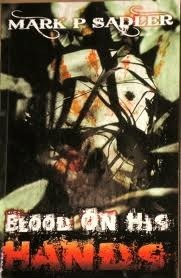 ds, by clicking the book cover.
ds, by clicking the book cover.
Published on October 10, 2011 09:04
September 26, 2011
Things That Come Out At Night
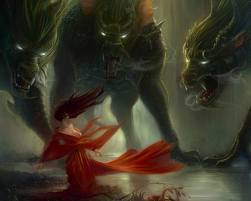
WereWolves
"Even a man who is pure in heart and says his prayers by night, may become a wolf when the wolf bane blooms, and the autumn moon is bright." Wolfman ~1941
No matter your age or where you are from, chances are, at some point you were frightened by a creature that comes out at night. Some had fangs and drank blood, others were walking corpses that feasted on the brains of the living, but some looked no different than you and I. They could roam the world as everyday humans and go unnoticed until...the next full moon would find them sprouting thick coats of fur and preying on the throats of unsuspecting travelers in the night. Some werewolves were even graced with the ability to transform at will, making them an even more frightening creature of the night.
The very first werewolf movie that I cut my teeth on as a child was An American Werewolf In London. Even today, it is the standard by which I judge all werewolf books or movies. I was 8 years old and it was absolutely brilliant. Considering the date and the technology available then, it is still one of the greatest transformation scenes I have ever watched and very few can hold a candle to it.
Werewolves hold a unique place in our hearts and minds, but where did this concept of half man, half wolf emerge from and how has it changed throughout the years? Let us quickly find out before the full moon's glow shines brightly and some of us are no longer the same.
As children our first taste of werewolves probably came from the childhood fairytale Little Red Riding Hood, but in history, werewolf folklore dates back thousands of years. In 8 A.D., Ovid wrote the Latin narrative poem Metamorphosis which follows a man cursed to roam the earth as a werewolf because of the heinous crimes he has committed against a child. Other great poets of the same era would dip into the werewolf tale. Virgil, Pliny The Elder and Gaius Petronius Arbiter, were just a few. Some of Arbiter's works on the subject date back as far as 60 B.C.
The origins of the werewolf tale stem from a primitive time when forests covered most of the landscape and animals were quick to steal a bite to eat from the sparse populations of humans that inhabited their lands. Europeans were some who turned terror and misunderstanding into legend and are credited with some of the very first werewolf tales.
In a time where medicine was confined to medicinal herbs, hocus pocus remedies and cures, mental illness was not something that anyone had ever heard of. As such, a person who was suffering from lycanthropy was not mentally unstable and in need of medication, sedation and observation, but was someone who was indeed cursed to be a werewolf and needed to be exterminated in order to save their soul. Sounds crazy to us, but to those living in these wilderness times when humanity was just finding its way, it made perfect sense. Today we understand lycanthropy to be the mental illness associated with schizophrenia where a person becomes convinced they are or have already, transformed into various animals, including wolves.
In European folklore it was said that even in human form, signs existed to distinguish a werewolf from other humans. If you had curved fingernails or low set ears, you could easily have been mistaken for a werewolf. For those poor folks who had the misfortune of having eyebrows that grew together, in a time before tweezers had been invented, they too were thought to be werewolves.
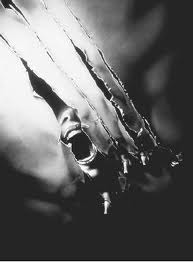
The means by which a person could be become a werewolf, were almost as plentiful as the stories themselves. A person could be bitten or scratched by a werewolf, the most popular means, but there are some more obscure methods that are a lot more fun. There was rubbing your body with magic salve, drinking from an enchanted stream and even sleeping under the full moon on a Wednesday or Friday with the moon's glow shining on your face. My personal favorite has to be, drinking rainwater from the footprints of the beasts that were found in the forest!
As the years passed and we, as humans, became more sophisticated & educated, our take on werewolves changed drastically, but our desire to carry their tale with us through history did not.
Literature has adapted a plethora of these iconic tales into short stories, novels and later on, into the movies we have grown to love over the years. The nineteenth century would see a host of very famous writers tackle the werewolf story from the likes of G.W.M. Reynolds, Sutherland Menzies and even Alexander Dumas.
The twentieth century would usher in the true emergence of the werewolf as a staple in horror fiction and an explosion of stories and movies based on the tale would come blazing onto the scene. In 1933, American author Guy Endore wrote The Werewolf of Paris which has since come to be known as the Dracula of werewolf literature.
The very first feature film to use the werewolf premise was Werewolf of London in 1935. It would however be Lon Cheney Jr.'s portrayal of the tragic character Larry Talbot in 1941's The Wolf Man that would set the standard for all movies in the genre. The movie catapulted werewolves into the public eye and from this one film two very crucial werewolf staples were established...werewolves always kill those they love the most and they can be quickly dispatched from this world by a silver bullet.
Other movies and books would come along and werewolves would be further rooted into the horror genre until the introduction of the paranormal romance and young adult books that embrace the these creatures.
J.K. Rowlings gave a new take to werewolves in her Harry Potter series in which she creates them as dangerous, but also as misunderstood and widely discriminated against. Other authors in the young adult genre would give new life to werewolves with books such as Shiver by Maggie Stiefvater, Dark Guardian by Rachel Hawthorne and Night Shade by Andrea Cremer.
Movies have been plentiful and werewolves have graced the big screen hundreds of times. From feature length cartoons like 2005's Wallace And Gromit: The Curse of the Were-Rabbit, to the 2010 remake of the classic The Wolf Man and even the new adaptation of the childhood tale in 2011's Red Riding Hood, werewolves have found for themselves, a home within our books, our films and our minds.
Even music has grabbed up a portion of this iconic creature that comes out in the night with songs like Monster by Skillet, Wolf Moon by Type O Negative and Of Wolf And Man by Metallica. These are barely scraping the barrel. You can literally find dozens of songs about werewolves and some you may never have even suspected were about them.
Though werewolves have a deeply rooted place in the media of our world, one thing has not changed much in the thousands of years since the very first tales were told. Werewolves were then and are almost always now, portrayed in a negative light. They are the thing to fear, they are the curse from which no one can ever return and they are the stuff of nightmares. I am happy to have them there in our songs, in our books and films in our very history. The alternative is, they walk amongst us, beside us and they are there waiting... waiting for the lights to go out, waiting for that next full moon, wanting to show us what really comes out in the night.
CK Webb
Published on September 26, 2011 19:31
September 16, 2011
CONGRATULATIONS!!
A big congrats to Lisa Faye Coombs & Nona Matherne on winning a copy of Jim Bernheimer's book, CONFESSIONS OF A D-LIST SUPER VILLAIN!! Lisa will receive a signed copy of Jim's book and Nona will receive an e-copy of the book. Thank you ladies for being loyal readers of Twisted Webb & WebbWeaver. Please use the contact page to send me your addresses and e-mails. Enjoy your books!!
CK
CK
Published on September 16, 2011 03:50
September 6, 2011
Guest Post & Signed Book Giveaway from Jim Bernheimer
 The Necessary Evils of Marketing
The Necessary Evils of Marketing
It has probably been said before, but if not, I'll say it. The beauty and the curse of being a small press or independent writer (Indy) is that you are responsible for making everything happen. That includes all the nuts and bolts of getting the book into publication, which is to be expected. Heck, portions of that can even be fun like cover selection (editing not so much), but then the author is hit with a nasty little shock - they have to successfully market their new shiny novel.
This isn't Field of Dreams. Just writing a novel is no guarantee that "They will come." It takes a lot of hard work that has absolutely nothing to do with writing a good story.
The first thing I recommend is to see what successful independent authors in your genre are doing and make a list. I write science fiction, fantasy, and horror. Some things I do won't do squat for a romance or humor author, so examine the people in your genre and decide what person's career you'd like to emulate.
Once you've come up with a list of possible strategies, you now have to face the likelihood that you won't be able to do all of these things. You can look no further than the numerous social media choices available to connect with your potential readers like Facebook, Twitter, Goodreads, Google+, MySpace, Kindleboards, Amazon, Barnes and Noble, and all the review blogs out there. It's an endless buffet and you've only got so much room in your stomach.
Yes, just because you can go make a video trailer for your book doesn't mean you should. This is just an example and I'm not slamming book trailers, but I haven't seen any real evidence that they sell more books than a good description will. In my case, I don't see the ROI (Return on Investment) because most of my sales come from Amazon and as an "Indy," I haven't come across a way to get a video trailer up without paying a large fee to their Createspace business unit. Yes, you can put it on your Author Central page, but the reality is only a small percentage of people who arrive on your book's page will click over to your author page. It makes a nice addition to your website or blog, but now you need a reason for a person to come to your website or blog, and that goes back to making a large investment of time and effort into hosting a successful blog. As with all my advice, your mileage may vary, but the time spent creating that video trailer is time you could have been writing or blogging.
In my own case, I have a wife, two feisty daughters, and a full time job to occupy most of my waking hours. This limits the amount of time that I can spend on the computer for both writing and marketing. So, I pick and choose where I maintain an online presence, because doing three things well is better than doing a dozen things poorly. There is something to be said about not biting off more than you can chew!
Generally, I stick to Facebook, my webpage (www.jimbernheimer.com), my Amazon Author Page, and make an occasional appearance on Kindleboards. Give readers a place where they can contact you, but you don't have to scramble like a crazy person trying to be everywhere at once. Take a deep breath and remember that this is supposed to be fun. If it's not fun, try and figure out why it isn't and fix it.
Guest blogging, reviews, and sponsoring giveaways are my bread and butter when it comes to marketing. Many authors also run their own blog. I haven't gone that route because (once again), I don't think I could add another ball to my juggling routine and do it properly. Instead, I spend my time contacting all the folks who have taken the route of posting regular content and attracting followers. For me this makes the most sense. Guest posting introduces my novels to this blogs followers and maybe a few are intrigued enough to give one of my books a try. The nice folks who run the book review blogs know that content is king and more interesting content keeps the readers coming back for more. Having authors come in and do guest posts is a mutually beneficial relationship for the author and the book blogger.
With the advent of "Blog Tours," it seems lots of other authors and the publishing houses as well have figured it out too, but keep in mind that being late to the party still means you're at the party, so don't get discouraged if this blog turns you down because they have a large to be read pile. When deciding whether or not to contact a blog, look at how often they update. The quantity and quality of their postings will tell you a whole bunch about the person or persons you are dealing with. I rank it just as important as the number of followers/networked blogs a review site has.
One big thing to remember, the majority of book bloggers are doing it because they love reading. They are volunteering their time. Things do come up in their lives that may interfere with reviewing your novel. One of the mistakes I made about six months ago was contacting a blog and accepting an offer to do giveaways for three of my novels. I sent them two copies of each book for a grand total of six, which ended up being about seventy-five dollars after shipping and handling. You can probably already see where this is going, but yeah, none of my books have been reviewed or given away.
Lesson learned - wait for the review and then coordinate the giveaway.
In conclusion, I'd like to thank CK and DJ for having me and offer encouragement to any author out there trying to get his or her stories published. If you don't know where to start when it comes to marketing, I say, "Keep it simple," and find things you can do and do them to the best of your abilities. Jim
Jim has graciously agreed to give away a signed copy of his book to one US resident and an e-copy to one international winner!!! For an opportunty to win a copy of CONFESSIONS OF A D-LIST SUPER VILLAIN please leave a comment below or at WebbWeaver Reviews http://bit.ly/HWQKW and the winner will be chosen from those entries!! Best of luck folks.
Published on September 06, 2011 07:12
August 15, 2011
Special Guest Post: Meet Karla Telega

Two years ago, I decided that I would rather floss with barbed wire than spend another day staring at spreadsheets and memorizing the Internal Revenue Code. I spent about a nanosecond deciding whether or not to quit my high stress job. Cons: ill-conceived, poorly-timed, totally rash. Pros: avoid an emotional meltdown that would make Chernobyl look like a leaky faucet. I went with column B.
Step two was to look busy, so I started writing. I figured that I could avoid looking for a new job, make a bucket of money, and retire to a little cabin in the wilderness. What I discovered was that I truly loved to write, and you can only fix rice and beans so many ways. I was able to pour all my fears and insecurities into my writing. The result was a humor book that received enthusiastic responses from editors and agents, who then turned me down.
Apparently, an editor's critique that contains the word "hilarious" eight times in three paragraphs is not enough to sway a publisher. The harsh reality is that humor is a hard sell even for nationally syndicated writers, which I wasn't. Undeterred, I decided to try the back door, and put my humor into a novel.
I like to read mysteries, so on that recommendation alone, I chose a book that told me in 100 pages how to write one. (Did I mention that I have a short attention span?) I've always enjoyed acting out the stories in my head … at 3:00 AM, with the curtains closed and the lights out. When it came time to do research, I threw myself into character. I slogged through swamps looking for a lizard man and panned for gold. I visited locations in my book, and talked to police, coroners, and correctional officers. I never knew research could be so much fun!
My main character, Maggie is based mainly on the changes I'm experiencing. She is coping with mid-life, anxiety, and an internal alarm clock that leaves her scrambling for purpose, identity, and adventure. She and her friend, Cher, set the irreverent tone of the story from their very first conversation.
"Do we really have to go to that damn book club meeting tomorrow?" Cher asked. "When we joined, I thought they were going to serve daiquiris while discussing Jane Austen. Somehow, we found the only dry book club in the county."
"Come on, Cher, we're going for the intellectual stimulation and thought-provoking dialogue. That's why we're reading Pride and Prejudiced Vampires." Maggie stuck her tongue out and made a gagging noise. "Oh, hell! Which of us wants to fake the Ebola virus to get out of it?"
"Your turn," Cher reminded her. "Last month I had bubonic plague."
"Yes, but the month before that I had terminal hemorrhoids. That should earn me a pass tomorrow."
Cher laughed. "That doesn't count. When you got your second opinion, the doctor decided that you just needed more fiber in your diet."
My writing career has been marked by making it up as I go, but in one regard, I absolutely followed "the rules." Know your readers. Right now, over 35% of Americans are age 50 or older. Both my humor book and my novel are aimed at the AARP crowd. So many writers want a book that is universally appealing, and end up with something that is not a good fit for any reading audience. I've gotten very positive feedback from people of all ages, but I absolutely keep my target readers in mind when I'm promoting my book.
I'm currently working on book two in the Maggie Gorski mystery series, but I haven't forgotten my humor writing. My partner and I are working on producing a series of humor anthologies, featuring some well-known humor writers, along with promising newcomers to the field. We wanted to provide an opportunity for exposure and publishing credits for some very talented writers, helping them to build their platform. We are currently editing our first book, My Funny Valentine, which will come out in January, 2012, published by Bauu Press.
Box of Rocks, published by Adoro Books is now available at Amazon, and through the Adoro Books website.
I would love to hear from you. You can contact me at info@telegatales.com, or visit my humor blog at http://www.telegatales.com/
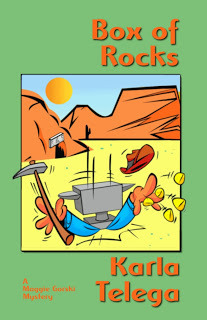
http://amzn.to/pAOE1a
Published on August 15, 2011 17:41
August 5, 2011
AUTHOR SPOTLIGHT: JEAN JOACHIM
 From Jean's website:
From Jean's website:I didn't start writing until about 15 years ago. I had two small children and used to get up at 5:30am to write for two hours before they went to school.
I wish I could say that I did this with support from others, but I did not. No one believed I could be a writer...least of all me...but I was driven to do it anyway. After years of denying myself, I just couldn't help it...like an addict I was compelled to write.
So I started out writing 500 word articles on advertising, business and children, all based on my own experience and expertise. Lo and behold, after my first article failed, everything else I wrote got published.
This was exciting and encouraged me. I guess even I could no longer deny that I was a writer. So I decided to attempt my first book, "Beyond the Bake Sale, the Ultimate School Fund-Raising Book."
I got an agent from a friend of mine and she found a top publisher, St. Martin's Press, with a fabulous editor, Elizabeth Beier and I was off.
After six more non-fiction books, I tried my hand at fiction. one cold day last January, while I was recuperating from loss and illness, Callie and Mac just landed in my head and told me their story. I flew to my computer to get it all down, just the way they were telling me in my head.
Thus was born, "Now and Forever, a Love Story". The characters have no resemblance to anyone I know and, least of all, to me. They are completely formed total strangers that leaped out of my head and onto the page.
It was a wonderful experience, listening to their story. in my head. I fell in love with them. After the book was done, I just couldn't let them go. So they were kind enough to bring another character to the forefront, Danny Maine, Kyle's brother. Then he told me his story and "Now and Forever Again, the Book of Danny" was born.
Now I am recovering from the onslaught of more characters, Mac's brother, Peter and his father, Sam, and others and, of course, Callie and Mac, because it wouldn't be a "Now and Forever" book without them.
i will be doing a final edit of the third book in the series, "Now and Forever After, Blind Love". I don't know if I will be able to separate from these characters when this book is finished. I love them all so much.
Now it's on to the final edit for book two and more editing for book three, trying to sell book one and find a publisher for the next two. I'm a busy lady.
Before I can finish editing my Now and Forever books, another book landed in my head. The characters, Kit Alexander and Tunney Nichols made me fall in love with them, too. So I'm writing their book as a straight romance, no mystery...a new challenge for me. This book, my fourth, is called "The Renovated Heart." I'm finished with my first draft and first two rounds of editing. I know what I need to change, but that book will have to get in line and wait until the Now and Forever series has been submitted to publishers and agents. Callie's sister appears in "The Renovated Heart."
In the meantime, I wrote ANOTHER book and found an ebook publisher! "Sunny Days, Moonlit Nights" is coming out in February, published by Astraea Press. I'm very excited. You can see the cover here on my site.
I have another story that has been nudging my brain, waiting for attention. It will have to wait until I have finished the final edits for the Now and Forever series.
I will be a guest blogger in February and have another radio interview. More on that later. Back to the computer. Please keep reading because I want to keep writing.
I'd love to hear from you. Email me at jean@nowandforeverbooks.com.
Best wishes,
Jean
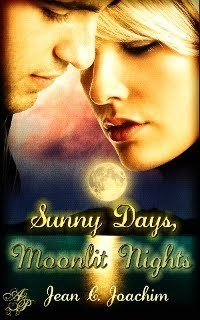
Published on August 05, 2011 18:01
July 28, 2011
Author Spotlight: Tim Ellis

From Tim's Website:
I started writing about four years ago, but before I wax lyrical on the now, let me take you back to 1953. I was born in the bowels of Hammersmith Hospital, London, on a dark and stormy night. Grew up in Cheadle, Cheshire, frequently visiting Beach Road in Old Colwyn, North Wales where my Gran lived. After a handful of years at a Primary School in Cheadle Hulme, which I can't remember the name of, I went to Broadway Secondary Modern school in 1968, but left before taking my CSE examinations - I hated school. These were the days when you could leave school with no qualifications and walk into a job. It was during this period that I discovered one of the main musical and literary influences in my life – Leonard Cohen, and began writing poetry. A collection of my poems was duly despatched to a publisher and subsequently rejected. I therefore had my first rejection slip as a 15 year-old boy. After leaving school, I had three or four mind-numbingly boring jobs before finally joining the Royal Army Medical Corps (RAMC) in 1971 at the tender age of 18.
I spent 22 years in the Army – which is a story in itself - leaving as a Regimental Sergeant Major in 1993. During this time, I wrote reams and reams of drivel on weighty topics such as Army Medical Organisation, Leadership, Military Law, etc. I did, however, find another three literary influences in JRR Tolkien, Bernard Cornwell, and Isaac Asimov. After leaving the Army, I was employed as a Senior Financial Manager in a Secondary School, and took up writing with a vengeance – assignments and dissertations for two Masters degrees, and a PhD Thesis.
Following 10 years of counting a dwindling amount of beans, I became a teacher of Psychology and Sociology and devoted another 6 years of my life to writing – lesson plans, objectives, outcomes, etc, but I did find more literary influences in Conn Iggulden, R.J. Ellory, and Stieg Larsson. I also began – at last – to write fiction myself.
In January 2009 – days before my 56th birthday – I had a heart attack. By this time, I had already researched and written two Historical novels on Genghis Khan (Warrior: Path of Destiny and Warrior: Scourge of the Steppe), and a YA Science Fiction novel (The Knowledge of Time: Second Civilisation). It was also becoming increasingly difficult to go to work and teach when what I really wanted to do was write fiction. I was lucky in that I was financially able to take the decision to retire, and by August of 2009 I was a man of leisure and a full-time writer.
In 1968, becoming a writer of fiction wasn't a career option for a 15 year-old working-class boy without any qualifications. It took over forty years of living life before I could choose that option. Since retiring, I have written book after book – now standing at ten (plus a collection of short stories), branching out into crime, fantasy, and science fiction. I've acquired a drawer full of rejection slips, but I have had some small minor successes. My YA Science Fiction novel was accepted for publication by a small press in America, I was awarded two short story 3rd prizes, and had four literary agencies request the full MS of Solomon's Key, which ultimately came to nothing.
Anyway, in March of this year I uploaded all of my books onto Amazon, Smashwords, etc., and made them available for the Kindle. To date, I have sold over 3,700 books, which is not bad for someone who left school at 15 with no qualifications!
For the future – well, I'm a writer now – and in a way it's what I've always been. I'm currently finishing the third book in the Parish & Richards series called The Flesh is Weak, which should be available for downloading by mid-August 2011. I then plan to finish another YA Science Fiction novel called The Timekeeper's Apprentice, which is already half written, and I've been asked to 'please finish Quigg 3: The Skulls Beneath Eternity Wharf'. I'm playing about with a biopunk novel called Triple Helix set in an alternative Victorian London, and another dozen ideas such as one called Footprints of the Dead about an American ex-policeman who lives in a haunted town and... Well, you'll just have to read them all. I have so many ideas, which I turn into the first chapters of novels so that I don't forget them, and then put them on here. One day, I might get round to finishing them, but in the meantime you can read them.
Also, I've talked about snippets of my life on my Book Blog, times like the Isle of White Festivals in 1969 and 1970, my time at the Royal Engineer's Apprentice College in Chepstow, Gwent, my ancestors - especially David the One-Eye. Well, if you want to know more - read them!
You can visit Tim's website at http://timellis.weebly.com/ to learn more about him and his books.

Published on July 28, 2011 05:51



